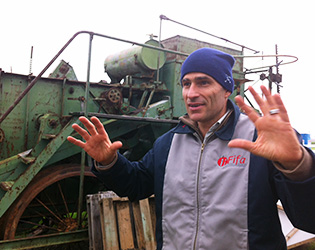In 2011, Jan-Erik Paino, a former construction worker and grape-picker, launched a new craft beer company in Sacramento inspired by Captain Frank Ruhstaller, a Swiss immigrant who owned several of the city's hundreds of breweries in the late 1800's. Paino wanted to make a beer to carry on Ruhstaller's legacy.

Paino's first recipe, a malty red ale called "1881," sold pretty well right away, especially to one local grocer, Darrell Corti, who ordered 10 cases, and then soon after, 12 more. When Paino paid a visit to Corti at his store in East Sacramento, "I was expecting a pat on the back," says Paino. Instead, Corti "gave me a stern look. He said, 'you don't deserve the words Ruhstaller and Sacramento together if you aren't using hops grown in Sacramento.'"
Hops are the fluffy green buds whose oils give beer its bright and bitter flavor. They grow on bines, and always clockwise. Up until World War II, Sacramento was a hop-growing empire. Corti grew up in California's capital, and remembers the days when miles and miles of these cone-shaped flowers still lined the riverbanks. "Corti had this intensity I couldn't ignore," says Paino. To truly make beer in the spirit of Ruhstaller, he realized, he would need to become a hop farmer.
Paino isn't alone in this pursuit. Ever since Prohibition, most hops have been grown on massive farms in eastern Washington and Oregon, and reached brewers in bulk via a few powerful hop brokers. But in recent years, people in other states are turning to hop farming, whether to join the local food movement, satisfy a growing taste for exotically hopped beer, or because of economic incentives and government subsidies.
